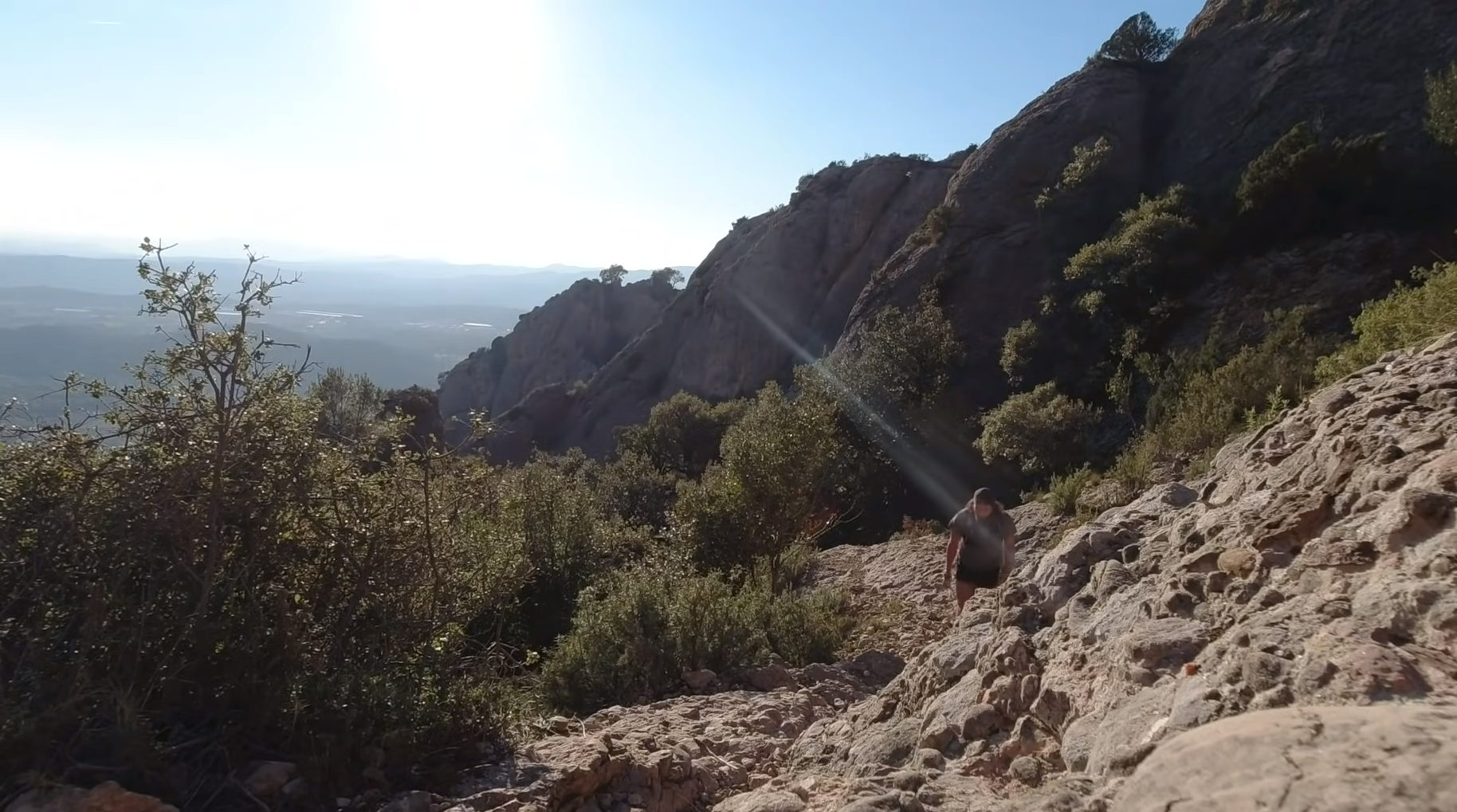Are you looking for an aerobic exercise that not only keeps you physically fit but mentally charged? Hiking is a great way to exercise both your mind and body. It provides the fresh air and exploration elements of being outdoors while also providing an impressive workout. While this type of exercise may be perceived as low-impact, it is important to understand what makes hiking such a beneficial form of physical activity – and if it can truly compare with more traditional forms like running or strength training. In this article we will discuss all aspects of hiking – from how exercising on trails differs from other types, its physical demands, possible injuries associated with as well as the psychological benefits associated with trekking through nature!
What Type Of Exercise Is Hiking?
Hiking is a great form of exercise that offers both physical and mental benefits. It’s an excellent way to build endurance, strength, balance, and coordination. Plus, you can get some fresh air while exploring the outdoors. [1]
Hiking is different from running in a few ways. First off, it’s slower than running due to the terrain, and oftentimes you’ll be carrying a backpack with supplies. This means it requires more focus and energy to complete the activity than running does. Secondly, because you are walking on uneven ground your body is forced to constantly adjust, providing an added challenge in comparison to running on flat surfaces.
So if you’re looking for a physical activity that is both challenging and enjoyable, then hiking could be the perfect choice for you. Not only will it provide a great workout but it’s also a wonderful way to spend quality time with family and friends. So make sure you get out there and enjoy the great outdoors, while getting some exercise at the same time. [2]
What are the Physical Benefits of Hiking?
It’s no secret that getting out into nature can have substantial mental health benefits, but it also has plenty of physical advantages as well. From getting your heart rate up to improving your posture and balance, here are just a few of the physical benefits you can get from hitting the trails:
- Cardiovascular Health: Hiking is a great form of aerobic exercise, which can help improve your overall cardiovascular health. The physical exertion required to hike up hills and over rough terrain gets your heart pumping and strengthens your lungs and heart muscles, helping reduce the risk of heart disease.
- Improved Muscle Strength: All that walking helps strengthen your lower body muscles, particularly in your calves, thighs, and glutes. Hiking also helps to tone and build core muscles while you navigate uneven terrain.
- Posture and Balance: The shifting weight of a full backpack can help improve balance, posture, and flexibility. As you press forward with the weight on your back, your hips shift from side to side as you traverse rocky terrain, which helps strengthen your lower body muscles.
- Stress Reduction: When you’re out in the fresh air surrounded by nature, it’s hard not to feel relaxed and stress-free. Hiking can help reduce stress levels and give you an opportunity to destress and clear your mind.
- Weight Loss: The physical exertion of hiking can burn hundreds of calories in just a few hours. Plus, if you’re carrying a backpack full of supplies and trekking for several miles, that number can even be higher. If weight loss is your goal, long-distance hikes may be the answer.
- Improved Mental Focus: Taking a break from the hustle and bustle of everyday life can help clear your head and refocus your goals. When you’re out in nature, away from the noise and distractions of daily life, it can be easier to think clearly and focus on what matters most. [3]
What Is Aerobic Exercise?
Aerobic exercise, also known as cardio, refers to physical activity that increases your heart rate and breathing. It is typically performed for a set period of time and can include walking, running, biking, swimming or any other type of physical activity that involves repetitive movement.
When you engage in aerobic exercise, your body works to increase its oxygen intake so that it can deliver more oxygen and other nutrients to your muscles. This is known as aerobic metabolism, which helps to improve cardiovascular health, reduce stress levels, burn calories and strengthen your muscles.
Aerobic exercise can be done in the form of long, slow activities like jogging, or short, intense activities like sprinting. It is important to keep your body moving for at least 20 minutes for it to reap the full benefits of aerobic exercise. This could mean swimming laps for 20 minutes straight or taking a 30 minute walk.
If you’re looking to start an aerobic exercise routine, it’s important to ensure that you pace yourself and don’t strain your body too quickly. Try to increase the intensity of your workout gradually over time and keep track of your heart rate during each session. This will help keep you safe and prevent any injuries. [4]
What Is Anaerobic Exercise?
Anaerobic exercise is a type of physical activity where oxygen isn’t used as the primary energy source. Instead, anaerobic exercise relies on the body’s stores of carbohydrates and fats for energy production. This type of exercise can be intense and short-lived, requiring a lot of effort over a much shorter period than aerobic exercise. Examples of anaerobic exercises include sprinting, weightlifting, and jumping.
The main difference between anaerobic and aerobic exercise is the way energy is produced. In aerobic exercise, oxygen from the air we breathe is used to break down glucose for energy production. In contrast, anaerobic exercise uses stored glycogen and fat molecules without oxygen as its primary source of fuel. This means that it can be performed quickly and violently, allowing the body to build power and strength faster than with aerobic exercise.
It is an essential part of any fitness routine as it helps to build power and muscle mass while improving overall cardiovascular health. It should be incorporated into your workout program along with aerobic activities like running or swimming for optimal results. And remember, no matter what type of exercise you’re doing, proper nutrition and adequate rest are essential for muscle growth and recovery.
Anaerobic exercise can be a great way to take your workouts to the next level and achieve some amazing physical progress. So, if you’re ready for a challenge, give anaerobic exercise a try! You might just be surprised at what results you can get from it. Have fun and stay safe! [5]
Is Hiking Aerobic or Anaerobic?
Hiking is a great way to get exercise and enjoy nature at the same time. But is it aerobic or anaerobic? The answer depends on how intense you make your hike.
If you’re just going for a light stroll in the woods, your heart rate won’t be elevated enough to reach anaerobic exercise levels. That means your hike will be considered an aerobic activity. However, if you work your way up a steep mountain and push yourself to the limit of what your body can handle, then your hike is more likely to fall into the anaerobic exercise category.
Anaerobic activities involve more intense physical exertion, such as sprinting up hills or carrying a heavy load over a long distance. These types of activities can cause your heart rate and breathing rate to increase significantly, leading to shortness of breath and exhaustion.
Whether hiking is aerobic or anaerobic depends on the intensity of the activity. If you are just out for a casual stroll in the woods, it’s likely considered an aerobic activity. But if you’re pushing yourself to the max on a tough trail, it’s likely anaerobic. It’s important to listen to your body and be aware of your own limits when deciding how intense you want to make your hike. [6]
How to Get the Most Physical Benefits from Hiking?
Hiking is a great source of physical activity and provides numerous health benefits. Here are some tips for getting the most out of your next hiking adventure:
- Start slowly. You don’t have to tackle a long, steep hike right away. Start with shorter, flatter trails and build up your endurance before you tackle a more challenging trail.
- Wear the right shoes. Investing in a quality pair of hiking boots or shoes can make your hike much more comfortable and less likely to cause injury.
- Stay hydrated! Make sure you bring plenty of water and snacks with you so you don’t become dehydrated during your hike.
- Take regular breaks. Make sure to take some rest stops throughout the course of your hike, and give yourself plenty of time to enjoy the scenery as well!
- Vary your pace. It’s important to challenge yourself on a hike, but it’s also crucial that you don’t overexert yourself. Make sure to switch up your pace throughout the hike, alternating between walking, jogging and even running where possible.
- Stretch before and after every hike. Stretching can help reduce soreness and prevent injury, so make sure to take a few moments before and after each hike to stretch out all of your major muscles. [7]
How To Prepare for Hiking?
- Choose Your Gear Carefully – Consider the environment, temperature, and terrain when selecting items such as a backpack, clothing, shoes, and camping supplies such as a tent or sleeping bag.
- Check the Weather – This will help you plan for any possible weather-related issues and make sure that you have the right clothing for the conditions.
- Pack Wisely – Think carefully about what you need to bring and leave anything unnecessary at home. This will help to ensure that your backpack isn’t too heavy and make sure that you don’t waste valuable energy dragging along extra items.
- Bring a Friend – Hiking with a friend can be a great way to have fun while also staying safe. Make sure to let someone know where you are going and when you plan to return so they can alert the authorities if needed.
- Know Your Route – Make sure to research your chosen route, or use a GPS device, in order to stay on track and avoid getting lost. This will help ensure that you don’t end up somewhere unexpected or find yourself in a dangerous situation.
- Respect Your Surroundings – If you are hiking through natural areas, make sure to respect the environment by leaving it as you found it. Avoid littering and don’t disturb any wildlife that you encounter.
- Stay Alert – Pay attention to your surroundings and watch out for potential hazards like slippery rocks or cliffs. Make sure to keep your wits about you and take regular breaks to rest your muscles and rehydrate. [8]
FAQs
What kind of workout is hiking?
Hiking is considered a moderate-intensity aerobic exercise, meaning you are working hard enough to raise your heart rate and break a sweat. However, the intensity can vary depending on several factors such as terrain, speed of hiking, elevation gain/loss and weight carried.
Is hiking better than cardio?
For those looking to lose weight quickly or build endurance, then the answer is yes – hiking can be more effective than traditional cardio exercises like jogging or cycling. That’s because hiking is an aerobic exercise that raises your heart rate and keeps it elevated for a long period of time, allowing you to burn more calories in a shorter amount of time. In addition, the changing terrain and elevation can provide additional resistance that helps build strength and stamina.
On the other hand, if you’re looking for shorter workouts with less intensity, then traditional cardio exercises may be the better choice. Cardio exercises can also help increase your cardiovascular health and are often the preferred option for those who suffer from joint pain or other medical conditions that make it difficult to take part in activities like hiking.
How much of a workout is hiking?
The key to getting the most out of your hike is to make sure that you challenge yourself. Increase the intensity of your hike by opting for more difficult terrain, such as hills or rocky trails. A brisk walk can be aerobic if you maintain it at a steady pace and keep your heart rate up. If you’re looking to get a good workout from hiking, aim for an intensity level that is similar to running or jogging.
You can also increase the difficulty of your hike by adding weight. Carrying a light load, such as a daypack, can help to add resistance and make your workout more challenging.
Is hiking an example of anaerobic exercise?
Hiking can be an aerobic exercise, but it can also be an anaerobic exercise depending on how you approach it. Anaerobic exercise is any intense physical activity that requires a short burst of energy such as sprinting or weightlifting. Hiking can also be considered an anaerobic exercise when you take steep inclines or push yourself faster than usual to reach a certain destination. It all depends on how you approach it and what your fitness goals are. If you want to have an aerobic workout while hiking, then keep to level ground and pace yourself at a slower speed. But if you are looking for anaerobic exercise, then challenge yourself with more difficult terrain such as steep inclines or sprints over short distances.
Useful Video: Avoid these 5 Endurance Training Mistakes I’ve Made [Hikers, Trail Runners & Mountaineers]
The Bottom Line
In summary, hiking has the potential to be a highly effective aerobic exercise depending on how long and difficult of a hike is taken. The benefits of hiking can include increased muscle and bone strength, improved cardiovascular fitness, and better mental well-being. However, as with all aerobic exercises, proper precautions should always be taken such as wearing appropriate clothes and sneakers to provide your feet with extra support, ensuring you stay hydrated and fueled throughout the hike, and sticking close to easy trails if it is your first time so you are able to get a feel for the terrain. No matter whether you’re an experienced hiker or trying this activity for the first time, everyone can benefit from getting out in nature and taking in the sights—all while reaping the health rewards that come with hiking!
References:
- https://frostvalley.org/wp-content/uploads/2015/05/Physical-Activity-Hiking-REV-1.12.2017.pdf
- https://wonderfarr.com/hiking-aerobic-or-anaerobic-exercise/
- https://www.nps.gov/subjects/trails/benefits-of-hiking.htm
- https://my.clevelandclinic.org/health/articles/7050-aerobic-exercise
- https://www.webmd.com/fitness-exercise/what-is-anaerobic-exercise
- https://www.endurancely.com/hiking-aerobic-anaerobic/
- https://www.nutrisense.io/blog/5-benefits-of-hiking-for-fitness-and-health
- https://www.backpacker.com/skills/backpacking-fitness/how-to-get-in-shape-for-hiking/
















Leave a Review